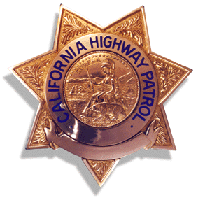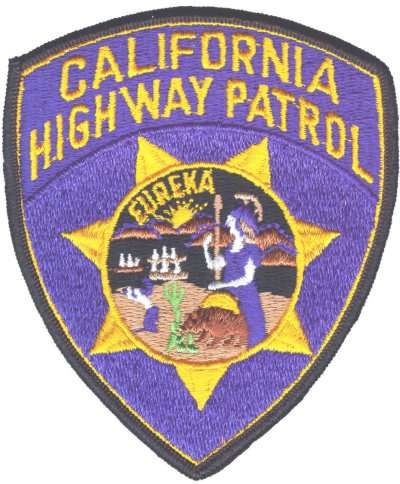California Highway Patrol Restoration
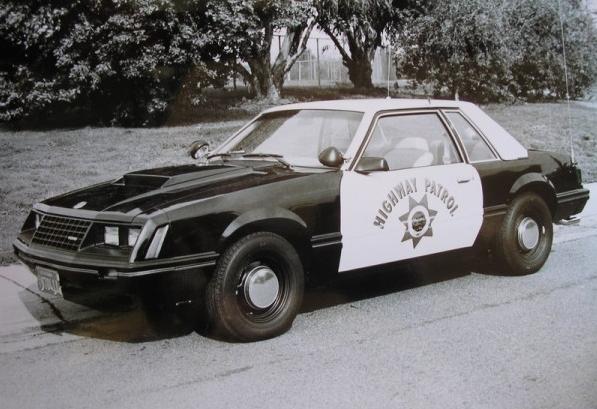
The California Highway Patrol really started things off for the Special Service Mustang program when they requested several 5.0 Mustangs for testing and evaluation purposes from Ford in 1982. The CHP ended up ordering 400 Mustangs as a result (mostly notchbacks, but there were at least four SSP hatchbacks built that first year only). The order compelled Ford to offer a police package for the Mustang to other agencies as well, beginning in 1983 when the Special Service Package Mustangs became available to any agency who wanted to purchase them. The CHP did not order any of the 1983 models, but did order them every year after through the 1993 model year, utilizing over 2500 Mustangs as enforcement-class vehicles. This makes them the largest agency-user of the Special Service Mustang. CHP did make-ready the cars in a central location (Sacramento), and therefore many of the cars were outfitted in the same manner with the same equipment. Equipment variances with CHP cars do exist, however, and it’s still important to research the prospective restoration project as thoroughly as possible for signs of equipment other than the norm. We are offering these pages as a reference for those who want to restore their CHP Mustangs as accurately as possible, though.
Ordering History
1982 was the first year for the Special Service Mustang. CHP ordered the cars with relocated decklid releases (right side of the column), single-key locking, special stereo speakers (with radio delete), and the cars were drilled from the factory for quarter-panel antenna mounts (drivers side). The cars were based on the “GL” trim line, with cloth and vinyl bucket seats, interior code “J” for French Vanilla. 1983 was the first year for the Special Service Mustang’s availability to agencies other than CHP.
The 1984-1985 CHP Mustangs ordered were still equipped with minimal DSO options. The marked units were ordered with interior code “H” for Desert Tan for the 1984s (“LX” based coupes, new for 1984) and “Y” or “A” for the Sand Beige or Charcoal 1985s (“LX” coupes, CHP mixed the interior colors and ordered Sand Beige and gray interiors several years).
In 1986, CHP cars started receiving more in the way of the newly available SSP-specific option content. CHP’s order for 1986 included the new, blue silicon heavy duty hoses (with “aircraft-style clamps”), police oil coolers, and police fan clutch, in addition to the other, standard–production SSP options.
For 1987, CHP ordered cars with the optional oil coolers, and they continued to order the cars with these until 1993. Interestingly, 1987 cars weren't ordered with the blue silicon hoses, as the '86's were. CHP didn't opt for the hoses again through the 1993 order. The '87s were a mixture of sand beige and smoke gray interior cars (like the '85-'86 cars).
In 1988, CHP was slated to participate in a test of Ford's fleet 95amp alternators. (it was later cancelled). CHP did not order the newly available Lesteks. The alternators were to be removed and replaced with the stock 65 amp versions at the 2 year service mark and then further evaluated.
1990 saw the first year of a new interior color, which was Titanium (code “A”). CHP modified the interior mounting brackets (fabricated in-house) to allow for the new-for-1990 airbags.
For 1993, Ford discontinued Titanium and offered Opal grey (code “6”).
Emergency Lighting & Equipment Overview
1982-1992 CHP Mustangs ran a steady-red front spotlight, clear passenger spot, and front alternating (“wig-wag”) headlights for front warning. California law mandated a steady red to the front, and still does today.
The rear lighting consisted of PAR 46 deck lights, with the outboard (drivers side) light Red and the inner light Amber. Starting in 1984, CHP added a Blue PAR 46 to the rear deck, mounting those on the passenger side. The housings were made by either Dietz or Grote, and some are still available today. The brackets for the rear lights were fabricated in-house by CHP.

In-service 1982, with only the Red/Amber. Image courtesy of Hot Rod magazine.
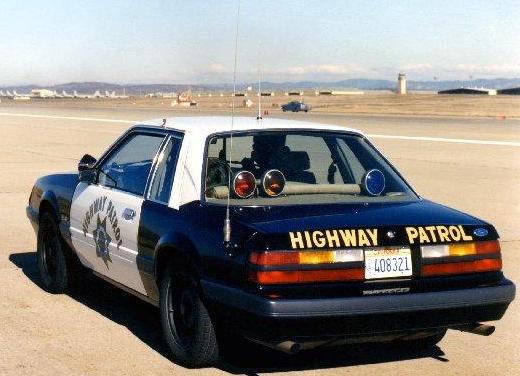
In-service 1985, unit #8321, with all three PAR46 lights.
Sometime in 1992, CHP began the move to Federal Signal rear lighting, using the Federal SML-2 lights (dual, red and blue), below the Federal Signalmaster traffic arrow. The front, steady red migrated from the drivers-side spot to an interior mounted light, which was usually placed just below the windshield header. Those cars with the interior mounted red lights were supposed to have clear outer spots, instead of the red drivers side, but cars have been seen with both setups.

In-service pic, unit #5204, Federal Signal rear lighting. Image courtesy of California Highway Patrolman magazine.
|

In-service 1993, unit #1553, with the interior mounted steady red.
|

In-service photo, 1993 unit. This car shows both red spot and red interior light. Image courtesy of Popular Mechanics magazine.
A majority of the marked cars were slicktops, but CHP did use lightbars on some early 90's units (Federal Signal Vision bars). CHP first tested the bars on Mustangs in September of 1990 (4 units total), but they didn't start equipping any Mustangs with the bars until 1992. CHP didn't typically order unmarked cars, although a few were reportedly repainted and used for other duties. CHP also used cars that were various colors for their commercial vehicle enforcement program.

In-service photo, 1992 or 1993 unit, running a Vision (1994 scene). Image courtesy of Real Stories of the Highway Patrol.

In-service photo, unit #9546, still running running rear PARs (same 1994 scene as above). Image courtesy of Real Stories of the Highway Patrol.
Emergency Lighting & Equipment Specifics
CHP did install dual spotlights on all marked units, and these were also specially made for CHP by Unity. These spots differed from Unity’s normal offering for police cars (the 6 inch S-6, or 5 inch H-1) in that the heads weren’t plated, were made of brass, and were factory-painted black.

Correct, Unity 6 inch spotlight heads, specially made for CHP.
|

Another shot of the spots. The stamped Unity logo differentiates these from the regular S-6 lights.
|
Controllers for the 1982-1989 (sometime in 1988-1989) lights and siren functions were specially manufactured for CHP by Federal Signal. The model number for the controller is the CC1, and these were used in conjunction with separate siren amplifiers (Federal Signal MPA2). Sometime in 1988 or 1989, CHP moved to the GE RANGR radio and control head, and all functions were controlled by the radio’s control head.

Federal Signal CC1 used with the 1982-1988 CHP Mustangs. The MPA2 siren amplifier sits below the CC1.
|
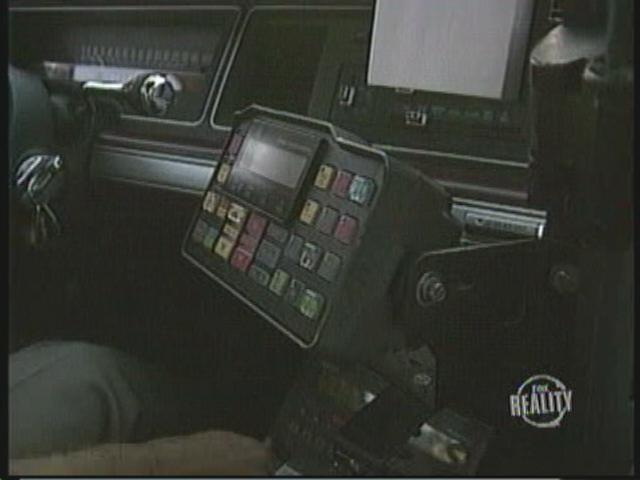
In-service photo, 1991 CHP Crown Victoria, with the GE RANGR control head. Image courtesy of Real Stories of the Highway Patrol.
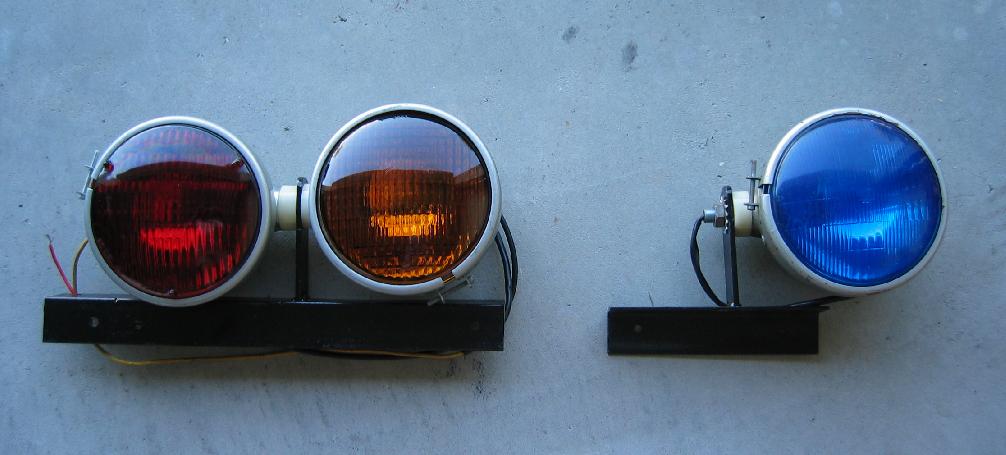
Grote PAR 46 rear deck-lights, with correct brackets. Red/Amber used for the 1982s,
Red/Amber and Blue used through 1991-1992.
|

Another shot of the deck-lights.
|

One of 2 styles of front red lights used on later cars. This has also been seen in-service with the factory rearview mirror.

Another shot of the light. The CHP Motor Transport manual says that cars equipped with this light
ran a clear front driver spot, but many cars have been photographed in-service with both red lights.

Correct, early Unitrol Model #131 "wig-wag" headlight flasher. CHP later went to a "Streetsweeper" model.

Correct, later "Streetsweeper" headlight flasher, manufactured by Approved Technologies.

Inside picture of the rear Federal setup, unit #9067 (restored car). Jim Young photo.

Another nice picture of #9067, rear deck setup. Jim Young photo.

CHP siren speaker location. CHP fabricated a bracket for the Federal TS100 speaker, and the holes shown in the front bumper were drilled for better sound dispersion. 1982's were on the drivers side, but they eventually moved to the passenger side. The holes for the earlier cars were large (and square). Jim Young photo.
The lights were all wired to the CC1 controller on the earlier cars, then the GE RANGR control head on the later cars. The CHP wiring schematic for 1984 (CC1 cars) shows that a flasher was to be installed between the two rear terminals on the CC1 marked "FLA". As such, the red, amber, and blue lights used with the CC1 would have flashed. There is not a flasher internally installed in the CC1, so failure to install a flasher would have resulted in the steady-burn of all rear lights. Recently, this has become a topic of debate, with many people in and from Calfornia maintaining that the rear,
red PAR light was steady-burn. While that may have been in the case in the 70's and earlier, the CC1 schematic for CHP shows a flasher, and footage from 1992-1994 from Real Stories of the Highway Patrol shows the red light flashing (numerous clips show the flashing, both alternating with the amber, alternating with the blue, and flashing in unison with the blue and amber in the Dodge patrol cars). The newer GE RANGR head, per the 1992 CHP Motor Transport Manual, does not have any provision for steady red to the rear, either.
Markings
CHP’s door stars are about 15 inches across, and the correct Mustang decals were made by Vitachrome Graphics in CA. Vitachrome used a very-specific printing process to make these decals, and many reproductions exist that do not come close to the quality of the originals.

CHP door decals.
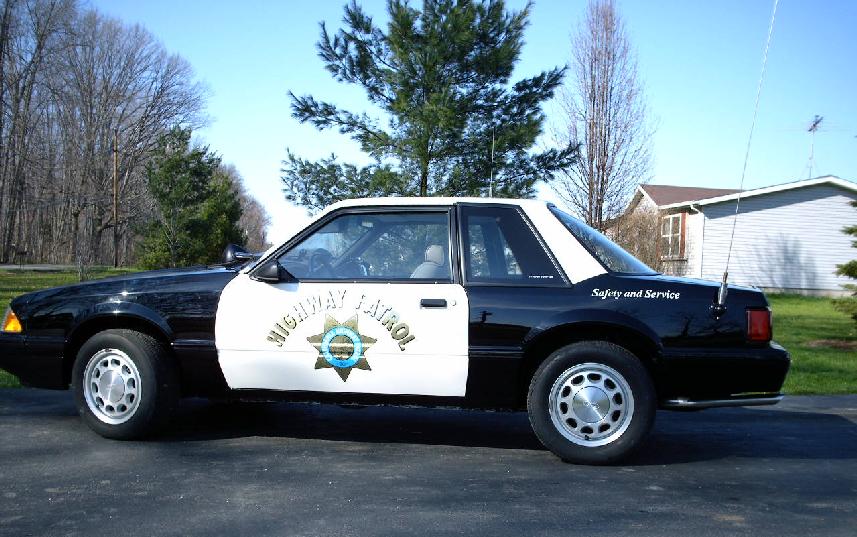
CHP door decals, restored 1992 (correct Vitachrome graphics). Jim Young photo.

CHP door lettering, original Vitachrome graphics. John Malloy photo.
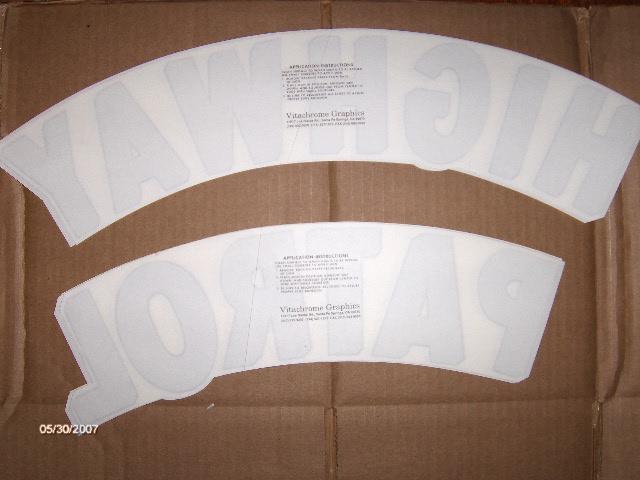
CHP door lettering, reverse side with Vitachrome Graphics business information. John Malloy photo.
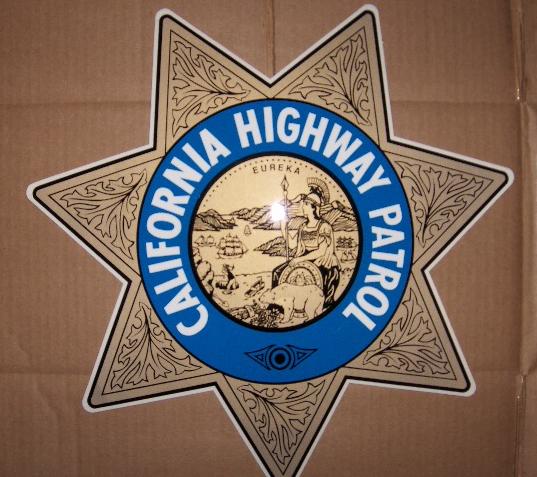
CHP door star, original Vitachrome. John Malloy photo.

In-service shot, 1982 CHP. Great shot of the door decals, as well as the OE '82-'84 center caps. Mike Catalano photo.
Rear decklid lettering for the cars varied slightly over the years. The early cars received non-reflective lettering, which was just over 3.5 inches tall (the "straight R" version). The lettering changed slightly for the 1984 through 1986 cars (the version where the "R" looks like a "P" that was converted). The font got thicker for the 1987-1991 cars, but still had a straight "R". The final version used, from about 1992, was reflective and the "R" was curved. There are in-service pictures of 1991s with the newer lettering, as well as 1992 cars with the older version, so either would technically be correct.

1982 in-service (possible prototype test for the Blue PAR). Image courtesy of Fabulous Mustangs magazine.
|
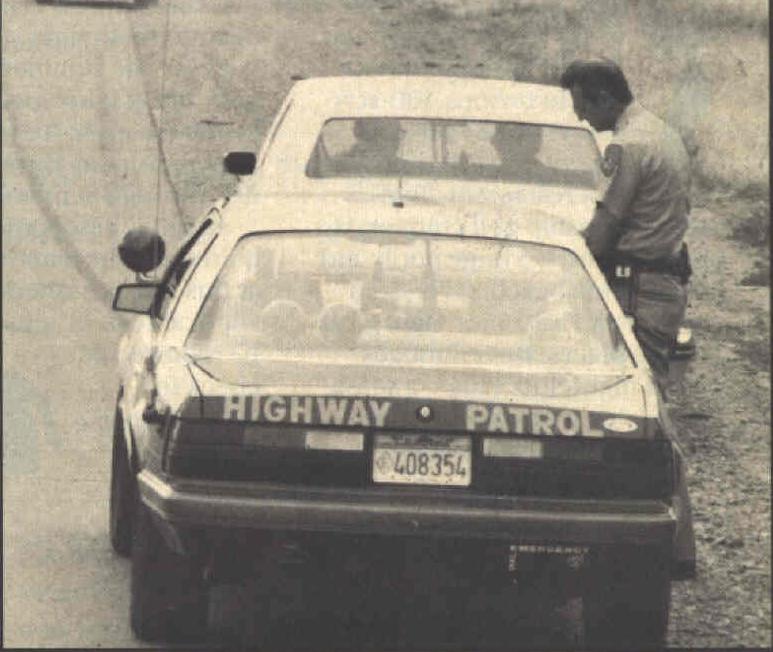
1985 in-service, different font. Image courtesy of California Highway Patrolman magazine.
|

1990-1991 in-service. This is still the taller font, thicker stroke, straight "R". Image courtesy of Popular Mechanics magazine.
|

1992 in-service, thicker, reflective font, with the curved "R". Image courtesy of SSPmustang.org.
|
The "Safety & Service" graphics started appearing on the rear quarters around 1989. In the pic of the '92 above (above right), the decals can be seen next to the paint break on the passenger side quarter. Jim Young's car a few pics above also shows the decals well.
California Highway Patrol Restoration Page 2
Home
